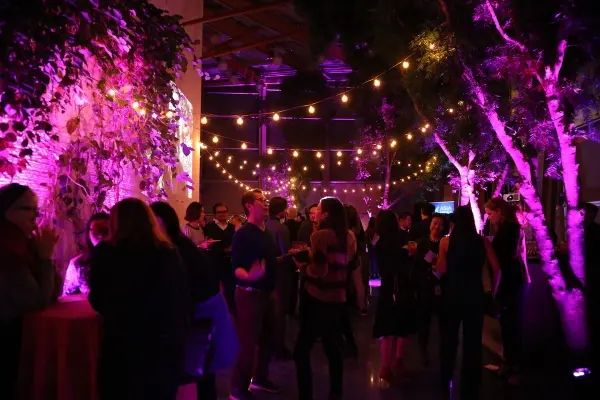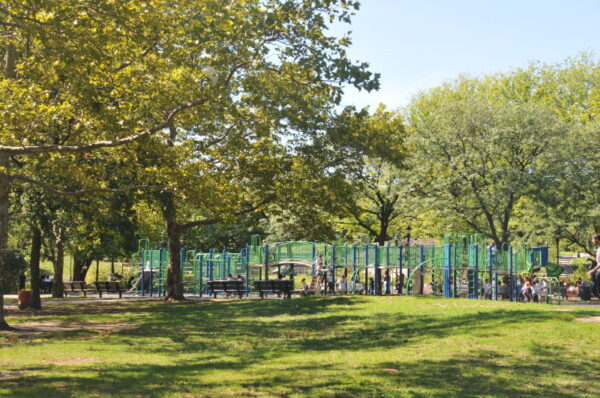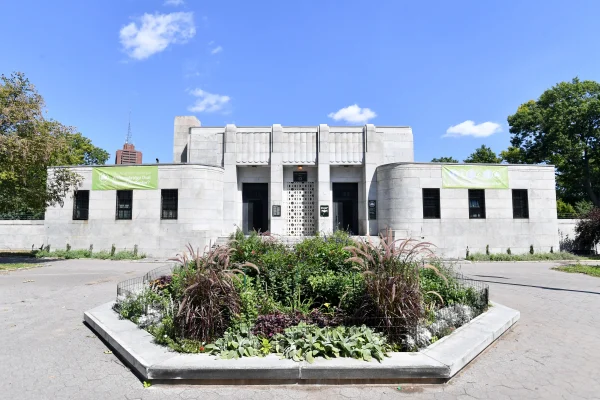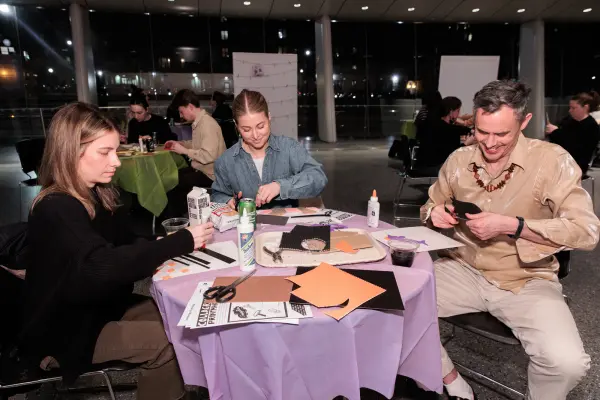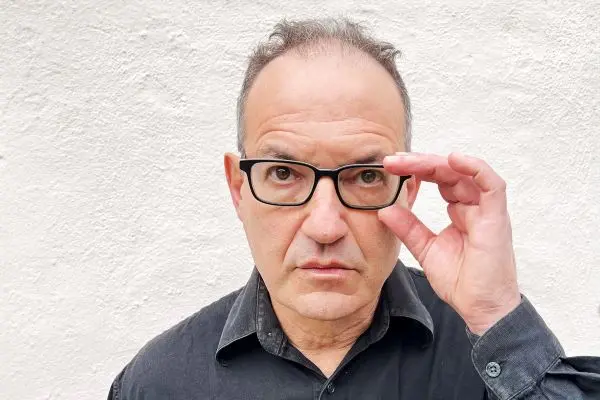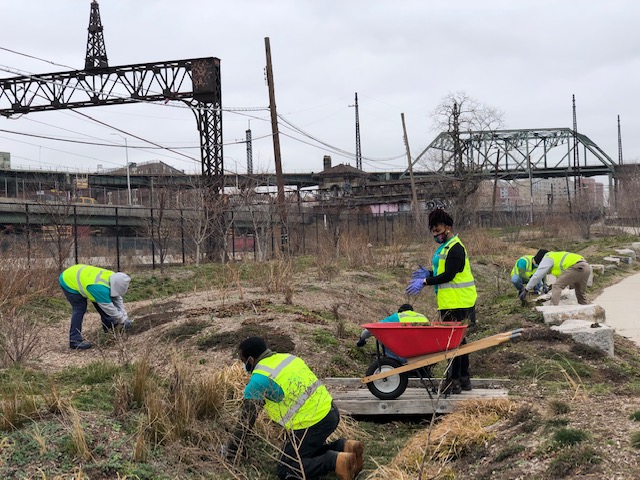Last month, we unleashed joy in the most epic way at our 40+4 Anniversary Celebration at our Bronx HQ. We invited our partners, collaborators, clients, vendors, and more to join us as we celebrated 40 (plus 4) years of being of service, delivering deliciousness, and helping others celebrate their milestones.
From the moment our guests arrived at our building – by car or by foot – they knew they’d arrived at the right place when they saw the large graffiti mural by Scratch decorating the front of the building and were greeted with the The Marching Cobras Drumline and Danceline who dazzled with energizing drums and electrifying dance.
Guests quickly checked their coats and stepped into Mae Mae Café and Plant Shop where they enjoyed live jazz music from Jazz at Lincoln Center and got their first bite and sip of the day – a Berry Beet Shot and some Carrot Tartare – before they embarked on a tour of our space.
We had so much to share with our guests! They started with the first floor commissary that starts on the south with the loading dock for incoming ingredients, goes through various walk in refrigerators, cold kitchens and hot kitchens, blast chillers, and pack out refrigerators to the out going loading dock. Inside the production kitchen which was still bustling with activity, they enjoyed some bites highlighting our production lines. The Sauce line presented Butternut Squash Soup with Truffled Croutons; the Starch Line presented Twice Baked Potato Gruyere Bites; and the Vegetable Line presented Eggplant Meatballs.
A fan favorite at our venues and at our 40th was a guest appearance from our friend and partner, Charles’ Pan Fried Chicken who served bite-sized portions of his Chicken Slider, Catfish Slider, and Cornbread.
Guests then headed up to the third floor, home to our administrative offices and pastry kitchen, where they had a photo moment in front of our mural painted by Crash, peeked in at the Sylvia Center and the Design/Marketing Offices before continuing through the main office to the Pastry Kitchen where they grabbed one of our incredibly delicious chocolate chip cookies.
A quick hop down to the second floor, they had the chance to see our Design Warehouse, a cave of wonders packed with all the essentials to turn an event into a party! Walking past our Subway Mural created by Scratch (complete with subway audio!), they stepped into our 2nd Floor Event Space! We transformed the open space into a swanky lounge with bars, food stations, a demo area, and a seated lounge.
Warm, friendly staff members greeted guests and offered a selection of our most popular hors d’oeuvres including House Made Kosher Pigs in a Blanket; Smoked Salmon Napoleon; Tuna in a Birds Nest; Mushroom Mole Tostada; Habanero Smoked Tofu Taco; Red Pepper Puffed Tortilla; Fluke Ceviche; Goat Cheese Bonbon; Beet Terrine; and Boneless Lamb Chop.
Guests wandered around the space, learning about our Exclusive Venue Partners and Nonprofit Partners (and how to support them); learning more about our history through our wall of Iconic Moments; adding their tags to a graffiti wall by Scratch; becoming experts in napkin folding with Kevin Horne, a long-time member of our event team; slinging cocktails with our mixologist Daniel Dougherty; and learning how to use vegetables in place of meat with Chef Andrew Smith.
We made sure everyone stayed hydrated throughout the event with our bar station and beverages from our partners at Dio. And of course we made sure that everyone left full of delicious treats from stations representing the breadth of our menus and partners.
At Katchkie Deli, named after our organic farm in upstate New York and featuring a vegan take on the classic NY Reuben with a Pastrami Cured Butternut Squash on Herbed Focaccia.
We shared our Momofuku Station, a collaboration with Momofuku to prepare and share their recipes at events, sharing Charred Eggplant Dip; Tingly Lamb; Chilled Spicy Noodles; Ginger Scallion Noodles; Spicy Pork Rice Cakes; Wagyu Ragu Rice Cakes; Shiitake Bao; Brisket Bao; Bing Bread.
Our friends at Russ & Daughters hosted a station featuring Bagel Chips; Latkes; Wild Alaskan Salmon Roe; Trout Roe; Smoked Salmon.
We worked with JJ Johnson to bring FIELDTRIP to the party with their fan favorite Short Rib & Carolina Rice Bowl and Quinoa Falafel & Wild Rice Bowl.
We rounded out the menu with our Pan African Station serving a variety of dishes that represent different regions across Africa: Chapati (East African Flatbread); Zaalouk (Moroccan Vegetable Dip); Burkina Faso Chicken Brochette; Senegalese Jollof Rice; Khudraat Mashwiyya (Moroccan Spiced Roasted Vegetables); Kelewele (Ghanian Sweet Plantain); and Tanzanian Tofu Curry.
We were thrilled to receive a number of citations and proclamations including a Citation of Merit from Vanessa L. Gibson, President of the Borough of The Bronx; and a proclamation from Mayor Eric Adams declaring March 11, 2024 Great Performances Day in New York City!
It was an incredibly joyous event, and we lived up to our Mission of Unleashing Joy through Genuine Hospitality. We love throwing parties with our clients; and we love even more having them over at our own home and throwing a party for them!
40+4 Video
Video credit: Hechler Photographers
Great Performances Through the Years
Gallery images credit Hechler Photographers
Explore exciting community events around the Bronx this month.
BRONX RIVER ALLIANCE
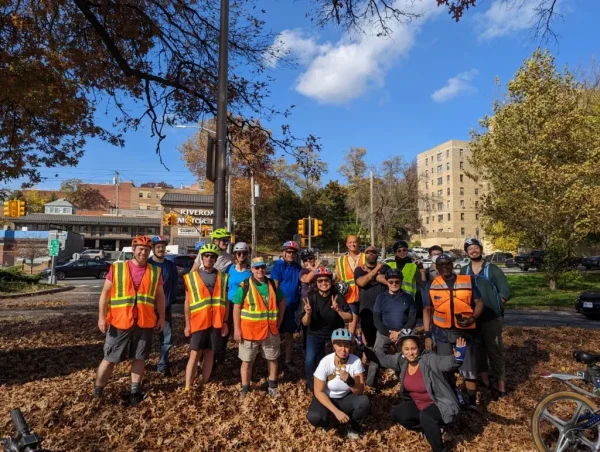
Bronx River Slow Roll
Saturday, April 20th from 10:00am to 12:30pm
Location: Woodlawn Metro North Station, West Side
Join the Bronx River Greenway Team for a family-friendly ride down the Bronx River Greenway. This 5-mile slow roll will give us a chance to meet in person while talking about biking, our neighborhoods, and activism in the Bronx. We’ll stop at important sites along the Greenway like Shoelace Park, East Tremont/177th Street, The Cross Bronx Expressway, and Starlight Park. We’ll finish off the ride at Starlight Park where the Bronx River Open House will be taking place. Feel free to stick around (and take advantage of the free bike repair)!
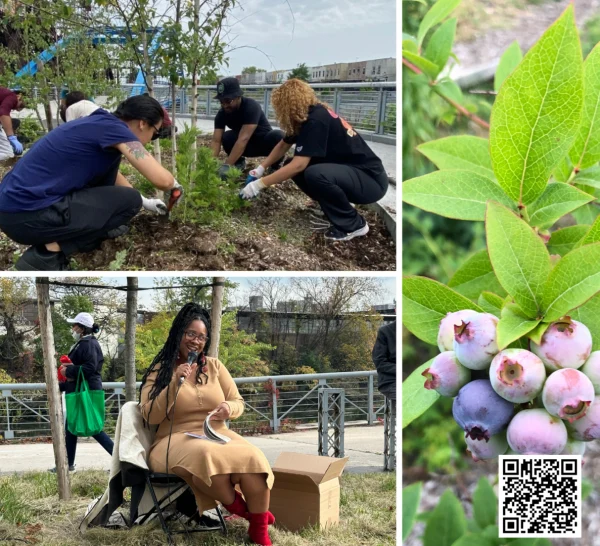
Weeding & Reading
Saturday, April 27th from 9:00am to 1:00pm
Location: Bronx Park
Have kids? Let them enjoy some reading while you enjoy some weeding! Staff will support adults with weeding invasive species, provide books for kids to read, and someone will read to any kids they bring.
CROTONA PARK
Kids Week
Location: Crotona Nature Center
Even when school’s out, our parks are still the city’s natural classroom! Bring your kids to parks throughout the city for Kids Week during Spring Break. With programs led by our Urban Park Rangers, kids will get to experience nature in a hands-on and fun way.
Upcycling Nature Crafts
Monday, April 22nd from 1:00pm to 2:30pm
Upcycling can be fun and resourceful for nature and ecology. Bring your own clean recyclable food and beverage containers to make fun art projects, bird houses, planters, and bee boxes!
Nature Puppet Show
Wednesday, April 24th from 1:00pm to 2:30pm
The Urban Park Rangers welcome you for some nature-themed puppet shows! Learn more about animals that can be found in our local parks.
City Nature Challenge Bio Blitz
Saturday, April 27th from 11:00am to 12:30pm
Location: Crotona Nature Center
NYC Parks is participating in the City Nature Challenge and is recruiting you to help. Join the Rangers as we walk the park to observe and collect data for the 2024 City Nature Challenge, a friendly competition taking place April 26-29 between cities around the world to see which is most biodiverse. This program will focus on identifying all living organisms. Participants are encouraged to download the iNaturalist app to collect data.
LITERARY FREEDOM PROJECT
One Book One Bronx
Punch Me Up to the Gods: A Memoir by Brian Broome
Saturdays: April 6th, 13th, & 20th
The Bronx Museum, 1040 Grand Concourse
Tuesdays: April 2nd & 9th
on Zoom
A poetic and raw coming-of-age memoir in essays about blackness, masculinity, and addiction, Punch Me Up to the Gods: A Memoir introduces a powerful new talent in Brian Broome, whose early years growing up in Ohio as a dark-skinned Black boy harboring crushes on other boys propel forward this gorgeous, aching, and unforgettable debut.
NEW YORK BOTANICAL GARDEN
The Orchid Show: Florals in Fashion
through April 21st
Strike a pose! The Orchid Show brings the catwalk to the Enid A. Haupt Conservatory in a fashion-inspired celebration of all things orchids—and we want YOU at the center of the sartorial experience. Catch the bold new designs of New York’s rising stars of the stitch with work by Collina Strada by Hillary Taymour, Dauphinette by Olivia Cheng, and FLWR PSTL by Kristen Alpaugh, fashionistas sure to create dramatic, picture-perfect floral displays at the Garden that always capture the orchid’s good side. This is your chance to “walk the runway” and show off your own personal flare, your love for orchids, and your fashion-forward connections to the natural world. Because florals are always en vogue at NYBG.
Orchid Nights
April 5th, 6th, 12th, 13th, 19th, & 20th from 7:00pm to 10:00pm
Tickets: $39 Non-Members, $29 Garden Members
New York’s Favorite Orchid Night Out Returns!
Immerse yourself in a mesmerizing array of orchids at New York City’s most fantastical night out. Visiting the exhibition in the evening with a cocktail in hand, underneath the twinkle of the Conservatory, provides a picture-perfect evening of beauty.
SOUNDVIEW PARK
The Soundview Gardener’s Club
every Tuesday from 3:00pm to 6:00pm
Location: Soundview Field House – 1550 Lafayette Avenue, Bronx
The Soundview Gardener’s Club is a space where After-School students from local schools and community volunteers come together to clear invasive plants, plant trees/native plants, and spread mulch as part of our forest restoration efforts in Soundview Park in The Bronx.
NYRR Open Run: Soundview Park
every Saturday from 9:00am to 12:00pm
Location: Entrance – Lafayette Avenue and Morrison Avenue
NYRR Open Run brings free, 5K weekly community-led runs, to neighborhood parks across the greater New York City area. The program is free and open to runners and walkers of all ages, abilities, and experience levels.
Called the “Gateway to the Bronx River,” 205-acre Soundview Park is located where the Bronx River opens into the East River. This urban green space is filled with grassy baseball and soccer fields, a cricket pitch, basketball courts, a running track, walking/biking paths, picnic fields, and more! With its extensive views of the water, Soundview Park celebrates the beauty of both the Bronx and East Rivers. The back part of our Open Run course has beautiful views of the Bronx River waterfront for participants to enjoy!
STARLIGHT PARK

The Bronx River Open House
Saturday, April 20th from 12:00pm to 4:00pm
Join us at the Bronx River Open House to celebrate Earth Day!
This free event will include:
- canoeing
- walking tours
- kid friendly educational activities and workshops
- teas / hydration station from The Bronx River Foodway
- New York Restoration Project will be giving away native trees
- RAP4Bronx will be giving away fresh produce
- REI will be providing free pop-up bike repair service
- music and more!
All giveaways and activities are first come, first served.
VAN CORTLANDT PARK
Nature’s Workshop: Build Your Own Biodome
Saturday, April 13th from 1:00pm to 2:00pm
Location: Van Cortlandt Nature Center in Van Cortlandt Park
Each program in this series explores its topic in-depth and allows you to develop a skill, participate in a hands-on project, and indulge your curiosity. Biodomes can be considered “mini-ecosystems” due to their ability to grow and sustain plant life. Learn more about what makes a great terrarium. Bring your own glass or plastic container.

Kids Week
Location: Van Cortlandt Nature Center in Van Cortlandt Park
Even when school’s out, our parks are still the city’s natural classroom! Bring your kids to parks throughout the city for Kids Week during Spring Break. With programs led by our Urban Park Rangers, kids will get to experience nature in a hands-on and fun way.
Kids Week: Wilderness Skills for Kids
Tuesday, April 23rd from 1:00pm to 2:30pm
Learn new skills to help you survive outdoors. Do you have what it takes?
Kids Week: Arbor Day Tree ID for Kids
Friday, April 26th from 1:00pm to 2:30pm
Celebrate Arbor Day with the Urban Park Rangers and explore the many species of trees that make the park wonderful.
WILLIAMSBRIDGE OVAL RECREATION CENTER
Creative Art Family Edition
Sunday, April 21st from 12:00pm to 1:30pm
Location: Multi-Use Room, Williamsbridge Oval Recreation Center
Participants are welcome to explore the arts through different mediums including collage, painting, and drawing. All family members are welcome.
We ask that participants see the front desk on arrival to fill out a free membership form.
Instructor: Ana Torres
GP in the Bronx
Did you know that Great Performances is headquartered in the Mott Haven neighborhood of the Bronx? We love being a part of the Bronx community, supporting other Bronx-based companies, and giving back to our community.
By Steven Moskos, Director of Staffing & John Gargano, Director of Service.
Service is at the core of who we are at Great Performances, and an important component of what we look for when we hire anyone, from our back of house and administration teams to our front of house and service teams. At every level, we should have a service and hospitality mindset.
Alongside the event venue and décor, the service helps sets the tone for an event. When guests attend a Great Performances party, they should feel welcomed and taken care of by every member of our team. Steven Moskos, our director of staffing, and John Gargano, our director of service, work closely to ensure our service staff have the training they need to hone their hospitality instincts and deliver exemplary service.
“At Great Performances, everybody receives comprehensive training as part of our 360-degree approach to transformation,” comments Gargano.
Training begins at onboarding and continues throughout a staff member’s tenure at GP, whether they’re adding new skills, learning the ins and outs of an event venue, or changing positions. As we kick off each season, we’ll also host training sessions to reinforce the essential skills necessary to produce successful events and that help them progress in their careers. We also take the opportunity to train new Service Leads and Captains, who will be added to our roster of leadership throughout the upcoming season. New hires and captains will embark on training shifts at actual events, where they get to grow in their skills through practical experience.
“We pride ourselves on giving staff the keys to their own success,” Moskos shares. “Through these trainings, staff who want to grow with us are given the skills they need at every stage to excel.”
Off season training sessions are refresher courses and professional development courses including Buffet, Tasting, and Private Home Service Skills and venue-specific trainings.
Our training program comprises classroom-style instruction, hands-on practice sessions, and role-playing exercises that use real-world scenarios. Through repetition and employing a variety of techniques that appeal to different learning styles, we ensure that all team members acquire the skills and mindset to provide the highest levels of professional, friendly, and warm service.
Learning the basics of service and building muscle memory allows our staff to practice empathy, attentiveness, and adaptability as they interact with guests and encounter different situations. More than just training our team members on skills, we focus on the qualitative aspects that turn service into genuine hospitality. We encourage our staff to look for non-verbal cues that can help them anticipate client and guest needs and deliver an experience that exceeds their expectations.
Throughout the training, our service pillars of Presentation, Teamwork, Knowledge, Service, Leadership, and Personality are highlighted, all of which drive our mission at Great Performances: Unleash Joy through Genuine Hospitality.
We’re delighted to share that Liz Neumark, Founder & CEO of Great Performances, has been voted onto the Board of Directors of New York City Tourism + Conventions.
New York City Tourism + Conventions is the official destination marketing organization (DMO) and convention and visitors bureau (CVB) for all five boroughs of New York City. Their mission is to invite the world and energize NYC, building equitable, sustainable economic prosperity and community through tourism for the mutual benefit of residents, business, and visitors.
Their focus on strategically driving leisure travel and business events in NYC have made a significant impact for their members and for NYC across all five boroughs. Their efforts across numerous communications channels have reached millions of travelers and potential visitors, helping drive an increase in conventions and tourism increasing leads and business for NYC.
In 2023, visitors who travelled 50 miles or more or spent one night in NYC increased to 61.8 million people, 93% of the record 2019 total. NYC is on track to welcome 64.5 million visitors in 2025 and to exceed pre-covid highs in 2025. This yields $74 billion in economic impact and 380,000 jobs.
A longtime member of the organization, Liz is proud to join a group of other industry leaders who are committed to the growth and success of NYC travel and tourism.
To learn more about the Board of Directors, please read the press release here and to learn more about the impact of NYC Tourism + Conventions, visit their website here.
One of the world’s oldest crops, the tiny legumes known as Lentils have been a staple in cultural cuisines across the globe for many centuries. And it’s no wonder; packed with plant-based protein, fiber, iron, potassium, and folate, lentils contribute to a healthy, well-rounded diet. And with over 50 varieties, they come in a beautiful array of colors and flavors to choose from. Our Venue Chef, Tatiana Iglesias, has shared her favorite Lentil Soup recipe, inspired by her grandmother’s original recipe. Enjoy this flavorful, hearty dish this March during the final cold days of winter. We encourage you to add more veggies or spices of your choosing and serve with your favorite lightly toasted crusty bread.

Lentil Soup
by Tatiana Iglesias, Venue Chef
INGREDIENTS
- 2 Tbsp dried onion
- 3 tsp dried garlic
- ¼ tsp cumin
- 1.5 cups lentils
- 1 tsp oil
- ½ cup chopped scallions
- ½ cup chopped tomatoes
- ½ cup grated carrots
- 5 cups water or broth
- ½ cup cubed potatoes
- Cilantro to garnish
PROCEDURE
- Heat oil in pot then add carrots, scallions, and tomatoes. Season with salt and pepper and cook till softened.
- Add dried onion, garlic, and cumin and sauté for 1 minute till fragrant.
- Add water (or broth) and the lentils, then bring to a boil. Reduce heat to simmer until lentils are tender but not mushy (about 45 minutes).
- Add potatoes and cook for additional 15-20 minutes until potatoes are cooked and tender.
- Ladle into soup bowls and top with cilantro if using and serve immediately.










